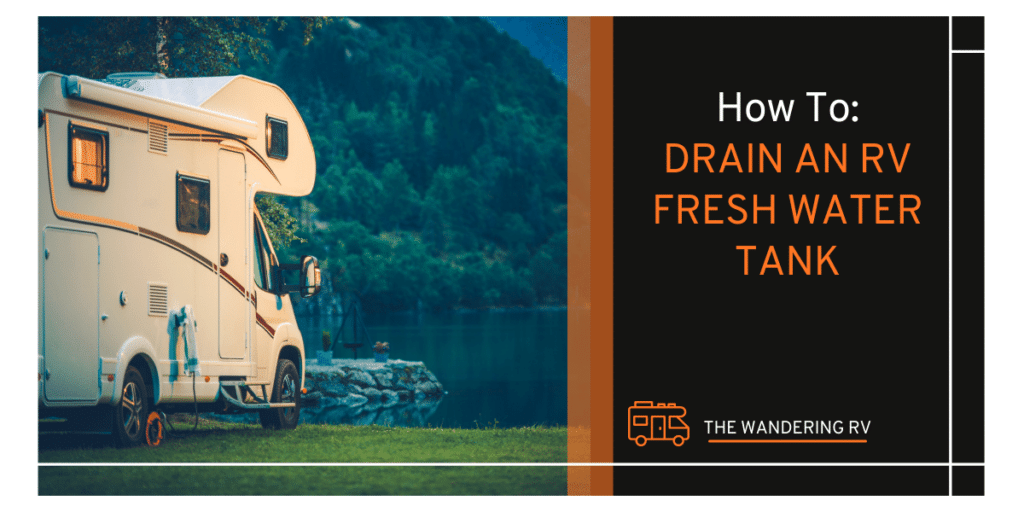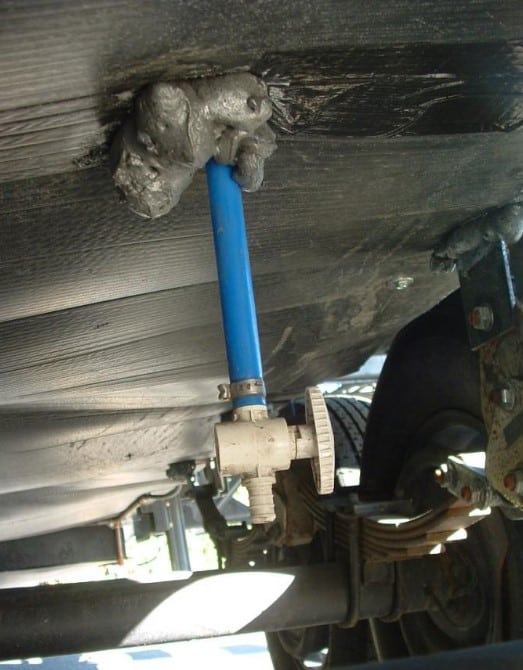
Draining your fresh water tank might not be as thrilling as conquering a scenic mountain pass, but it’s an essential part of RV life that deserves some attention. So, buckle up, dear adventurers, as we navigate the winding roads of RV fresh water tank drainage, and guide you through the process of keeping your tank in tip-top shape. Ready? Let’s dive in and make a splash in the riveting world of RV water management!
Table of Contents:
So, how do you go about draining your fresh water tank?
Before you drain your tank(s), you should make sure of a few important things. First, make sure your water pump and hot water heater are turned off. You’ll then open up all of the faucets and showers to release any pressure and drain the lines.
You’ll then locate your fresh water tank drain. It normally looks like this:

The drain valve should be very near the water tank itself. On my camper, there are two hoses next to each other, one is an overflow hose and has no valve. The other is the water tank drain. If you can’t find one or are unsure if it’s the correct drain, consult your manual or search online for your specific RV.
If you are wanting to drain all of the water out of your RV, you should also locate your two low-point drains. They are usually nearby, one being red and one being blue. This will drain all of the remaining water out of the water lines.
You should also pull the pressure release valve in your hot water tank (once the water cools off), and pull the hot water anode rod to drain any water in your hot water tank.
Once all of your water has drained, simply reverse the process. Hot water anode rod and pressure release valve, low point drains, and finally your fresh water tank drain valve. Also, be sure to shut off any faucets or showers. Otherwise, as soon as you fill-up the next time and turn on your water pump, you may be in for a surprise!
Should I leave any water in the tank?
Most of the time, you only want to leave fresh water in your tank for up to 2 weeks. More than that and you risk stagnant water, with mold or bacteria growth.
Please see our article on how to clean your fresh water tank.
Should I drive with a full water tank?
Water weighs about 8 pounds per gallon, and a full tank can add a significant amount to your RV. There is no harm in driving around with a full tank, as the RV is designed to do just that. Just be aware that it will add weight and lower your fuel economy. If I know there is a water hookup near where I’m camping, I’ll fill my tank up to about ⅓ full when I leave. This allows me to use the bathroom, wash my hands, and have access to water. Once I’m close, I’ll top off my tanks and finish the route.
Conclusion
With your newfound expertise in draining an RV’s fresh water tank, you’re ready to hit the road with confidence, knowing your RV’s water system is well-maintained and prepared for any adventure. So, keep this guide handy and remember that regular care of your fresh water tank is key to a hassle-free, enjoyable experience in your beloved home-on-wheels. Happy travels, and may your journeys be filled with crystal-clear water and unforgettable memories!




